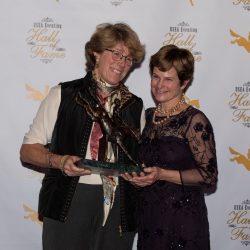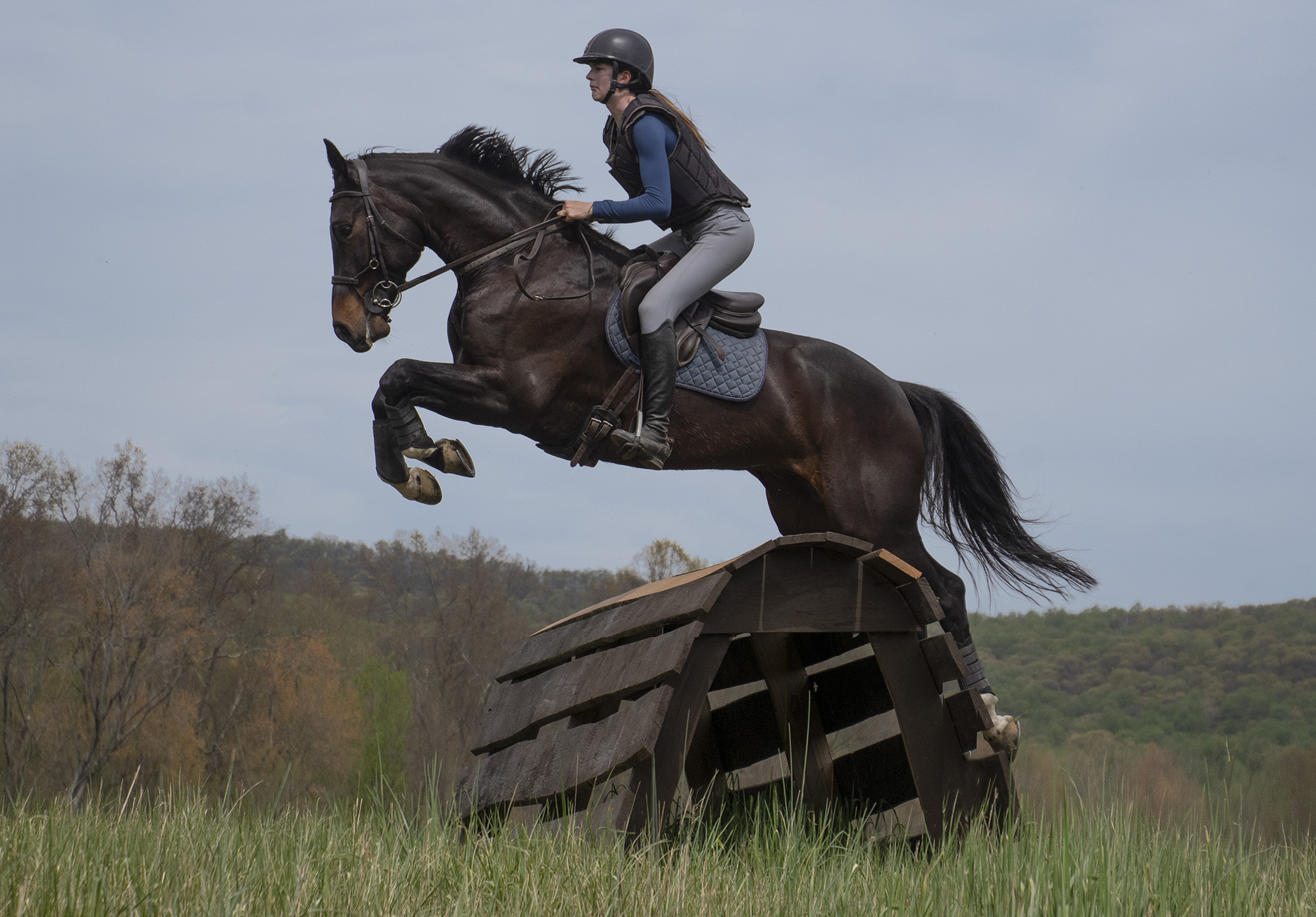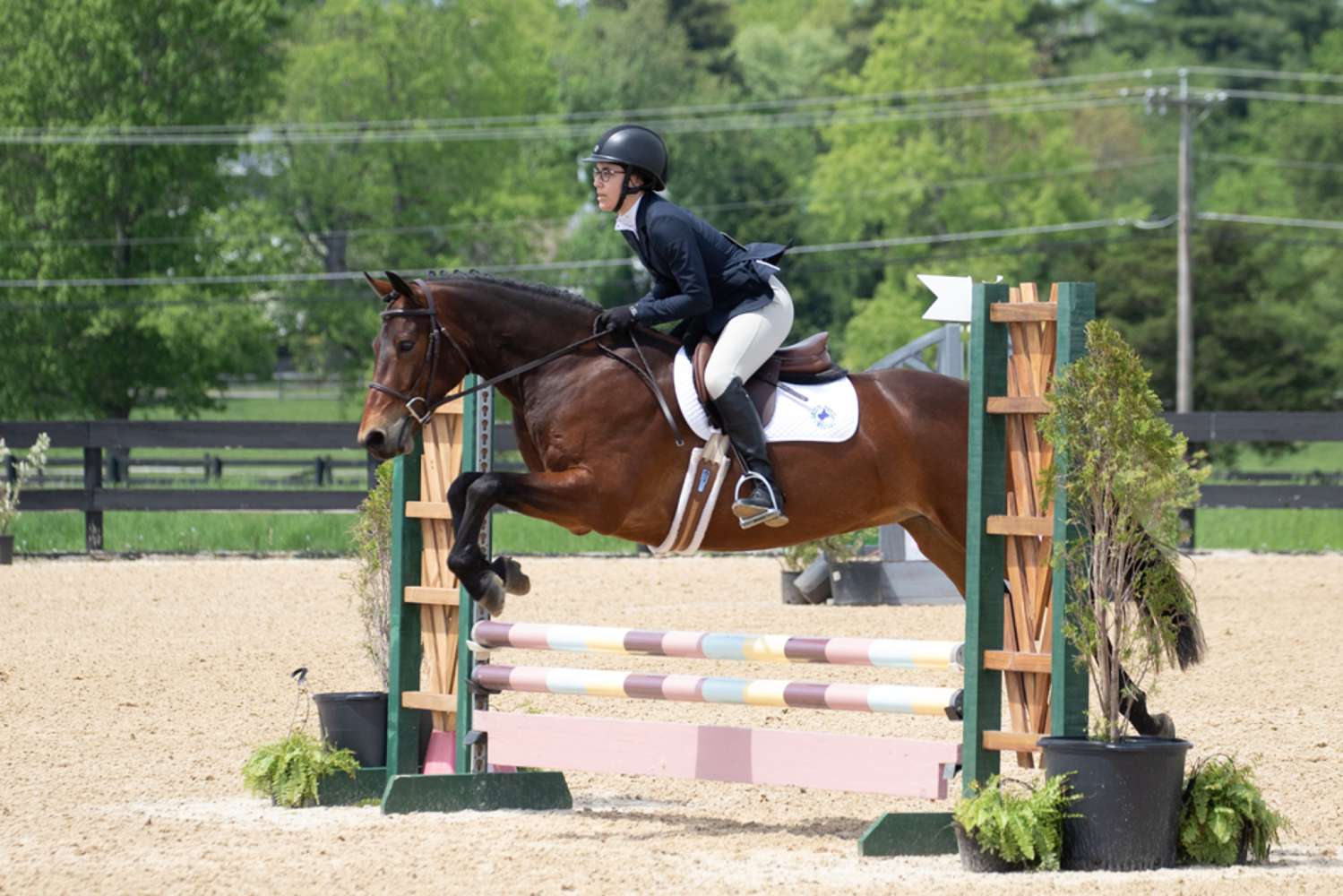
Lainey Ashker is among the panelists who will be sharing insights at the 2019 EQBW Summit. Photo by Leslie Threlkeld.
Now more than ever it’s important for women to support one another personally and professional. The inaugural Equestrian Businesswomen Summit, to be held on Jan. 9, 2019, in West Palm Beach, Florida, aims to help nurture that community of support, providing inspiration and information on how to grow as a businesswoman and find success for your business.
The idea for Equestrian Businesswomen (EQBW) came from Jennifer Wood of Jennifer Wood Media, Inc. and Jump Media, who originally wanted to have an event that would bring like-minded entrepreneurs together for camaraderie, support, and networking.
“I started EQBW after a few years of an idea for a conference and the feeling of wanting something like this that provide resources, mentors, and a community when I started my business almost 10 years ago,” she says. “What was initially an idea for a conference grew into the 2019 EQBW Summit and then we saw the opportunity to really help equestrian businesswomen year-round.”
The mission of EQBW is to connect businesswomen in the equine industry to provide them with resources and community to foster their professional development and business opportunities. In this community, women can harness the network of like-minded individuals, inclusive of various disciplines and skill sets, to educate themselves, become better managers, strengthen relationships, and more, in order to strive for success in whatever business they pursue.
“We will be announcing our membership platform at the Summit and what it will entail, including member networking, expert resources, and online learning video content,” Jennifer says. “I see this as a community for any horsewoman, no matter what type of business they have or what type of horse they ride. I think it can provide a great opportunity for young women out of college and new in the work force to network, as well as more established entrepreneurs to work with peers, get advice, brainstorm, and more.”
The Summit will feature a number of thought-provoking and inspiring speakers talking about timely, relevant topics to help engage, support, and inform equestrian businesswomen. The speakers represent a variety of roles — riders, trainers, entrepreneurs — each offering unique skill sets, and women from all equestrian disciplines are invited to attend.
- Keynote speaker Tracey Noonan: Tracey is the CEO and Co-Founder of Wicked Good Cupcakes, Inc. along with daughter, Dani Vilagie. The company, now seven years young, has grown to be a nationally known, multi-million dollar brand thanks in part to an appearance on ABC’s Emmy Award-winning show Shark Tank and subsequent deal with Shark, Kevin O’Leary. Wicked Good Cupcakes is now the largest shipper of cupcakes in the U.S. and has added a host of other products. To date, Wicked Good Cupcakes reports sales upwards of $22,000,000. Tracey was a 2015, 2016 and 2017 Finalist in the prestigious Ernst and Young Entrepreneur of the Year competition. Tracey has more than two decades of experience with horses in the hunter/jumper, dressage and eventing disciplines and her colt, Quoi De Neuf, competed at Dressage at Devon.
- Motivational Speaker Béatrice de Lavalette: Béatrice will tell her story of courage, perseverance, and focus as she recovered from a catastrophic injury, and how her horse played an exceptional role in her recovery. She will talk about how amazing things can happen and a new path in life can be found in the outcome of a critical situation. Béatrice de Lavalette is the most critically injured survivor of the Brussels Airport terrorist bombing. The now double-amputee Bea has been riding ponies and horses since the age of three and never one to give up, she was back on her horse for the first time five months after the bombing. Bea received Pentagon approval for one year of intensive rehabilitation at the Naval Medical Center-San Diego. While in San Diego, she met and began training with Shayna Simon at Arroyo Del Mar, with the goal of representing the United States at the Paralympic Games in Tokyo in 2020. Bea is now attending the University of San Diego where she was granted the status of Scholar-Athlete. Bea will be competing in her first CPEDI*** January 17-20, 2019 during the Adequan Global Dressage Festival.
- Informational Panels, to include:
“Building a Successful Equestrian Business” – in partnership with the US Equestrian Annual Meeting
Lisa Roskens from International Omaha
Lisa Lourie from Spy Coast Farm
Alexandra Cherubini from EquiFit, inc.
Noel Asmar from Asmar Equestrian
Dressage Olympian Ashley Holzer
Jobs Panel — “So You’re Not a Pro Rider. Job searches off the saddle.”
Donna Brothers from StarLadies Racing and NBC Sports
Nicole Lakin from BarnManager and the Equine Tech Collaboration
Equine physiotherapist Janus Marquis
Veterinarian and pharmaceutical expert Dr. Torri Maxwell
Social Media Panel – Do You Really Need Snapchat? What’s your social strategy?”
Eventing rider Laine Ashker
Shona Rosenblum from Grand Slam Social
Patricia da Silva from Heels Down Media and Magazine
Social influencer Bethany Lee from My Equestrian Style
Work/Life Balance Panel – “Put the Phone Down. Finding balance in a connected
world.”
Sarah Appel from Horse & Style magazine
Eliane van Reesema from Hylofit
Reiner and Quarter horse breeder Mandy McCutcheon
Lisa Davis Engel from A Wynning Advantage and Sidelines magazine
With Moderator Julie Saillant from Motivation-Addict.com
An additional presentation from Alexa Anthony of StableGuard on market research is on the schedule, as is “The Power of Media & Membership” Panel held at the US Equestrian Annual Meeting, which is taking place Jan. 9-12 at the Hilton West Palm Beach.
A presentation about the upcoming launch of a year-round membership program for EQBW, which will include member networking, expert resources, and online video learning content, will be given and a special introductory membership price announced.
There will be a networking lunch where attendees and panelists can meet and chat with women from across the equine industry while enjoying the complimentary lunch at the Hilton West Palm Beach in the Florida sunshine. Compare notes, show pictures of your horses (or kids), talk best practices, and share contact information.

We all need to feel a connection, and the EQBW Summit can provide ways to learn as well as motivational moments.
“I really think the idea and the company has so much potential and we really see the opportunity for tremendous growth and a way to help so many people,” Jennifer says.
The 2019 EQBW Summit will take place on Wednesday, Jan. 9, 2019, at the Palm Beach County Convention Center in West Palm Beach, Florida. Tickets are $50. To learn more, visit www.EqBusinesswomen.com and follow EQBW on Facebook and Instagram.
























































